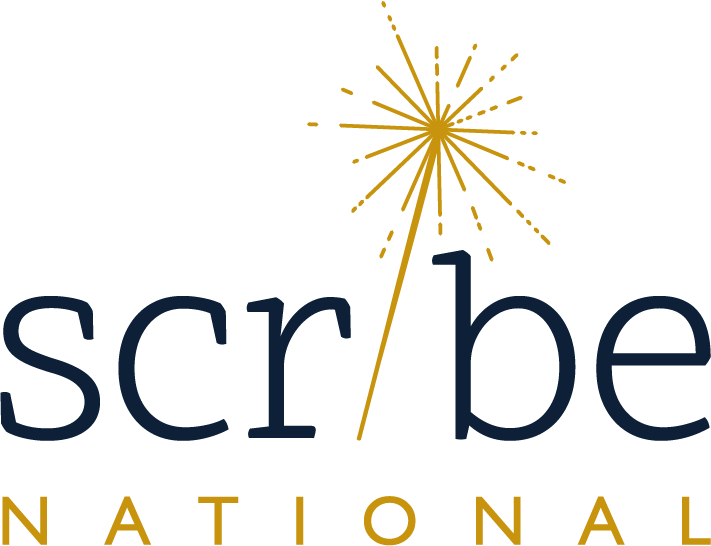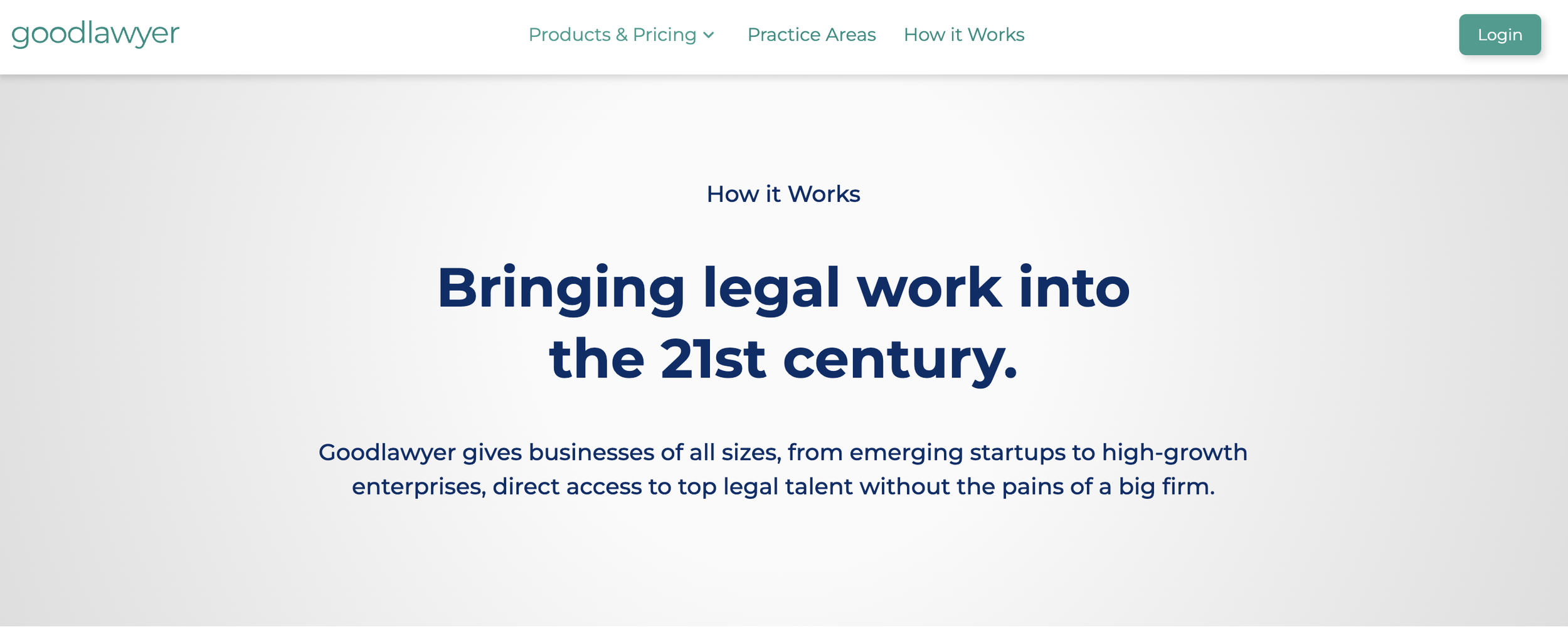7 brand voice examples for B2B companies to stand out
There’s no denying that a recognizable voice helps you stand out. Remember the glorious days of early 2000s music? Icons like Mariah Carey, Beyoncé and Christina Aguilera topped the charts thanks to their superstar voices. You don’t have to be Beyoncé (let’s be real: no one can), but these brand voice examples will inspire you to be more intentional and maybe even a little bolder with your B2B company’s marketing.
Globally, B2B marketing leaders are doubling down on branding. “Roughly six in 10 leaders say their C-suite has increased the importance of brand building given economic conditions,” according to this LinkedIn B2B Marketing Benchmark report.
So, it’s time to practice hitting the high notes with your brand voice. Let’s explore:
What is brand voice?
Brand voice vs. tone
The importance of brand voice development
What makes a captivating brand voice
Seven brand voice examples of companies that have nailed it
Six brand voice development steps for your B2B company
A simple brand voice chart you can steal
How to ensure your brand voice guidelines get used
What is brand voice?
A brand voice is a key component of your company’s brand personality, which also includes your visual identity (think your logo, brand colours, imagery, fonts, etc.).
Voice refers to the distinct “sound” evoked by your language and communication style, whether spoken or in writing. It’s how your audience recognizes your brand in your marketing content, and it’s what sets your content apart from that of competitors.
Brand voice vs. tone
There’s a nuance here. Voice guides your overall communication and remains relatively consistent across marketing channels and content types. In contrast, tone gives your company the flexibility to communicate in different ways depending on the situation. After all, a cat meme isn’t always appropriate.
For example, a hip SaaS brand with a generally friendly and casual voice might adopt a more serious and empathetic tone when addressing a customer complaint. Makes sense, right? (Of course, you could always take a chance and hope the customer is a cat lover).
The importance of brand voice development
You might be tempted to skip this work and focus on content creation instead. That would be a mistake. Without a captivating voice, your content will fall flat. Instead, having a strong brand with a distinct voice enables your B2B company to build a real connection with your audience. This helps drive demand and sales.
With this in mind, it’s not surprising that the LinkedIn report shows B2B leaders plan to invest more of their marketing budgets in brand building, to the tune of 30%.
What makes a captivating brand voice
You now understand the importance of brand voice. So, how do you create a pitch perfect voice for your B2B company that will help you be heard above the digital din?
Here’s what “captivating” really means when it comes to brand voice development:
Authentic to you and your company
Clear and consistent
Compelling
Let’s walk through why each of these elements matters.
1. Authentic
It’s critical to be intentional about how you’re communicating. More than 85% of consumers say authenticity is key when deciding which brands they like and want to support. How exactly can you be more authentic? Start by staying true to why your company exists and weaving that thread through your marketing.
Let’s break down how to do this: Say your company exists to make people’s lives simpler. That could include providing a SaaS product that helps people streamline their work to increase their impact. In this case, your brand voice might be the perfect combination of no-nonsense and compassionate.
2. Clear and consistent
Having a clear, consistent brand voice will help you avoid confusion and build recognition faster within your market. The faster you can build brand recognition, the sooner you’ll build relationships with your audience and the sooner you’ll start driving higher revenue. That’s the power of clarity.
Consistency is also paramount to driving results with your branding. Think about it this way: have you ever come down with a cold and called up a friend who couldn’t tell it was you on the other end of the line? In the same way, your audience may fail to recognize your company if you don’t hone your brand voice to sound like you, every time.
3. Compelling
The way you present your brand in your marketing content should make your audience want to hear more from you. If you want to build relationships that establish trust and drive sales, you need to create an emotional impact with potential customers.
When it comes to creating a compelling brand voice, the advice that you should be interested to be interesting fits well here. Showing your company’s passion for the work you do, and a specific point of view on your industry, is an excellent place to start to develop a brand voice that will keep your audience engaged.
7 companies’ brand voice examples
Need some extra inspiration? Learn how to nail brand voice development from these all-star examples.
1. Syantra
Cancer can be a scary diagnosis, but early detection can save lives. That's where the precision biotechnology startup Syantra comes in. From content highlighting fundraising events to memorable and empowering customer stories, Syantra consistently uses a brand tone of voice that shows just how much the company cares about the people it serves.
2. Goodlawyer
Good help isn't so hard to find, after all. Goodlawyer is a tech startup that makes legal help accessible to businesses of all sizes. This brand voice example is a masterclass in how to communicate with your values in mind. How? Goodlawyer’s voice nods to the company’s focus on transparency and quality, with a dash of fun sprinkled into the mix.
3. Absorb
Absorb is a cloud-based learning management system. The company focuses on solution-oriented marketing to advertise its software. Rather than being too academic (an easy trap to fall into), Absorb’s brand voice is casual and unassuming, which comes across as approachable, relatable and inspiring.
4. Benevity
Benevity provides charitable donation-management and grant-management platforms for other organizations. With a brand tone of voice that highlights the combination of passion and purpose that drives the company and its customers, Benevity aims to empower individuals to donate to any nonprofit of their choice. The company’s website is loaded with content like activation kits and impact reports that support the products it offers.
5. Coconut Software
Providing appointment scheduling for banks and credit unions, Coconut Software’s voice is clear, concise and professional without being stiff. Coconut Software knows its audience, and the company’s content is geared toward financial institutions looking to better support customers. This approach allows Coconut Software to connect with its audience in a friendly, relatable way, while suggesting an alternative to boring banking.
6. Neo Financial
Neo Financial is a tech company that aims to influence how customers spend, save and earn rewards through credit card usage. This brand voice example conveys innovative confidence and quality in a way that’s reminiscent of Apple. The company builds relatability and trust with its audience through down to earth, approachable language. By making finances seem fun and accessible, Neo encourages users to sign up for its products and benefit from cash back.
7. Trulioo
Tech company Trulioo provides electronic identity and address verification. Users include global banks, tech giants, and Fortune 500 enterprises who rely on Trulioo for fraud prevention and more. Trulioo’s content aims to build trust with potential customers by humanizing the people behind the brand. The company’s website uses a friendly but factual voice to present white papers and case studies that solidify its position as an authority.
6 key steps to brand voice development
We’ve covered what to aim for when developing your brand voice (authentic, clear and consistent and compelling), regardless of your brand’s unique attributes. We’ve also shared seven brand voice examples. Now, here are the steps to bring your voice to life.
1. Consider your mission, vision and values
This is the foundation of why your company exists and what you believe in, so it’s a natural starting point when you’re trying to hone in on an accurate and compelling brand voice. Let’s say your mission is to simplify the procurement process through innovative, user-friendly solutions. Here’s how this mission could inform your brand voice:
Use clear and concise language: Prioritize clarity and simplicity, use plain language that avoids technical jargon and be sure to break down complex concepts so they’re easy to understand. Consider how professional B2B content writing services can help you elevate your content.
Take a customer-centric approach: Convey a deep understanding of your customers’ challenges and share real-world examples that demonstrate your commitment to simplicity.
Adopt an innovative and forward-thinking tone: Showcase your commitment to staying ahead of trends and pushing boundaries to provide users with the latest advancements.
Use approachable and friendly language: Take an approachable and friendly tone that creates a sense of warmth and accessibility, ensuring users feel comfortable engaging with your brand and your products.
2. Review your existing content
Starting from scratch is usually never the answer when it comes to branding and marketing. This holds true for brand voice development. So, take a look at your existing content, including website copy, social media posts, email campaigns, blogs, press releases, and any other branded content your company has created in the past year.
Read through the content and analyze the overall style of the writing. Identify recurring linguistic patterns and language choices that define your brand's voice. Check if your messaging is consistent across different platforms. Look for any discrepancies in how your brand appears.
Now it’s time to decide what to keep and what to chuck. Ask yourself a few questions:
Does the content reflect the core attributes you want your company to be associated with?
Does the voice resonate with your target audience?
Is the language and tone appropriate for the people you want to engage?
Recognize the strengths of your existing brand voice and acknowledge any areas that may need improvement. This will help you retain effective aspects while fine-tuning the less successful ones.
3. Get an outside perspective
Sometimes it's tough to describe your brand voice because you’re too close to the subject. You can remedy this by asking your team and customers how they perceive your brand.
Encourage honest feedback and be sure to listen deeply, as people will likely offer insights and nuances you’ve missed. This is how you gather diverse perspectives that will enrich your understanding of how your brand is perceived in the market.
It’s also worth considering conducting brand surveys and focus groups as part of your customer research to gain an even broader perspective. These insights will further refine your brand voice. Just remember to survey people whose needs align with those of your audience.
4. Establish what your brand voice isn’t
Identifying what characteristics your brand doesn’t possess is a useful (but often overlooked) step in the brand voice development process.
For example, your branding may be fun, but not silly, or friendly but not casual. Or, it might be innovative, but not reckless. Inspirational, but not preachy. You get the point!
5. Evoke emotion
Like every Adele album, the purpose of your brand voice is to create an emotional impact. Speak the same language as your audience to draw in potential buyers and enable them to relate to your marketing. Remember, when people feel understood, they’re more likely to trust and buy from your company.
Be aware that not everyone will love your brand message, and that’s okay. Every brand has its unique identity and target audience, and as you play with emotion, you may receive mixed feedback. Authenticity is key – stay true to your brand's values and voice, even if it means polarizing opinions.
6. Show up consistently
In the same way you consistently post content, you should audit the voice in every piece to identify and weed out what is off-brand for you. Like when Geri Halliwell left the Spice Girls, you’ll notice when things just don’t sound right.
If different members of your team are creating content, note changes in wording and how your audience engages with each piece. By tracking content performance, you can see how your brand voice resonates. This will help you stick to the traits of your most successful content.
A simple brand voice chart you can steal
Once you determine about five key brand voice attributes that suit your company, consider how your brand tone of voice will change in different contexts. Here’s an example you can use and modify as you see fit. This brand voice chart is deliberately simple. It specifies a few different contexts in which a B2B company might communicate, and what tones are acceptable in each context.
How to ensure your brand voice guidelines get used
Having a brand bible complete with voice and tone information is pointless if no one on your team uses it. Unfortunately, this scenario is all too common. Here are a few issues you might run into and how to overcome them.
Lack of awareness: Not everyone “gets” branding. So, conduct a few casual training sessions to educate team members on how to effectively apply the brand voice in their communications. Offer concrete examples and templates. This helps clarify expectations and empowers employees to create on-brand content efficiently. Most importantly, cover why this matters to boost your chances of getting everyone invested in the brand’s success.
Fragmented ownership: Avoid this by designating a central authority like a brand manager, responsible for overseeing brand voice consistency. This person should be the primary point of contact for questions, feedback and updates related to the brand voice.
Communication barriers: Break down silos by encouraging cross-functional teams to work together on marketing initiatives with clear roles and responsibilities outlined from the outset. Make referencing and incorporating your brand voice into all marketing a central part of the process.
Lack of accountability: Hold team members accountable for adhering to brand guidelines by incorporating consistency metrics into performance evaluations. Recognize and reward those who consistently produce on-brand content.
Technology troubles: Leverage tools like brand management software to streamline the creation, distribution and tracking of branded content. This can help make sure that people can easily find and access your brand guidelines in one central location, as well as streamline approval workflows.
Brand voice guidelines are not set in stone. You should regularly review and update them to reflect evolving market trends, audience preferences and company objectives. Ask for feedback from internal and external stakeholders to ensure your guidelines stay relevant and effective.
Get our free resource with expert brand voice guidance
Your B2B company has a brand, but it could use some refining. If this sounds like your situation, it’s worth your while to dedicate some time to honing a distinct brand voice. This will help you as you work to build customer relationships and drive demand for your offerings through content marketing. Download our free guide to find out the six keys to an in-demand brand, and how you can enhance the strength of your brand. Contact our content marketing agency in Canada today to learn more!










